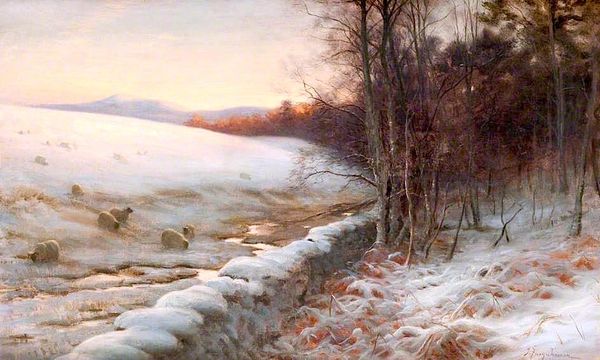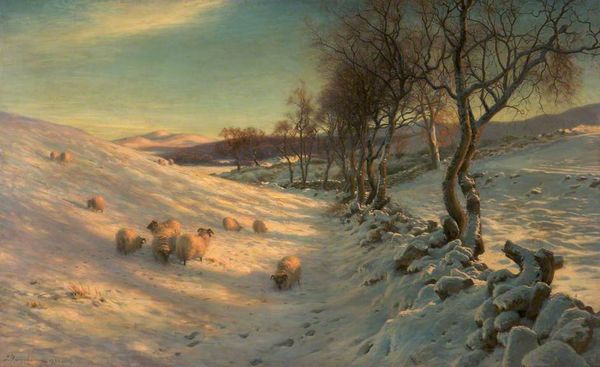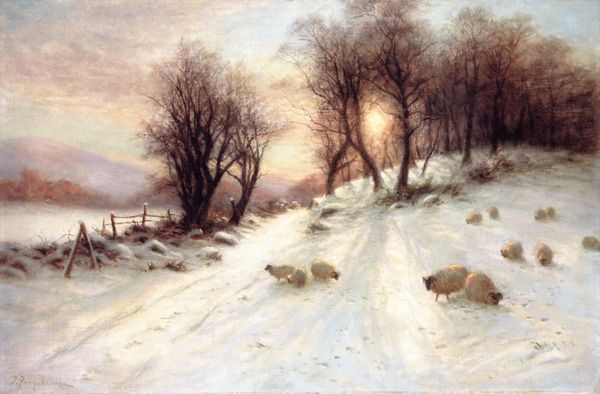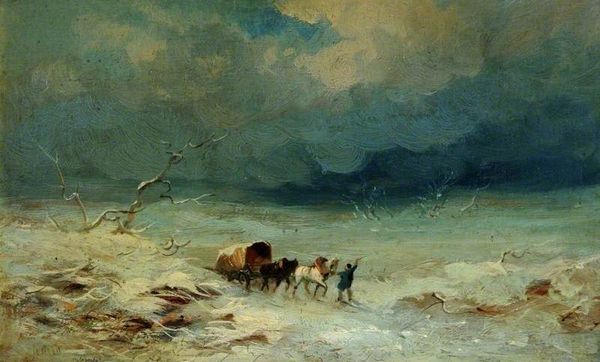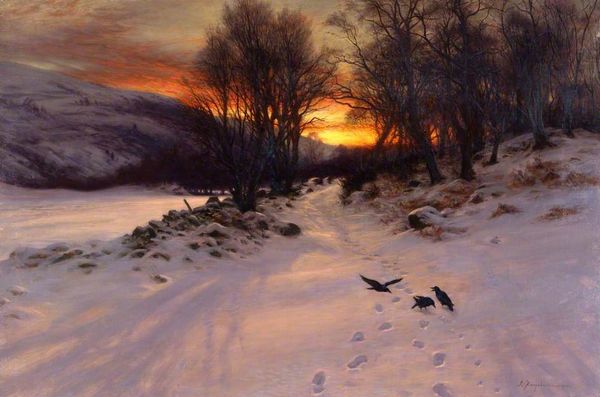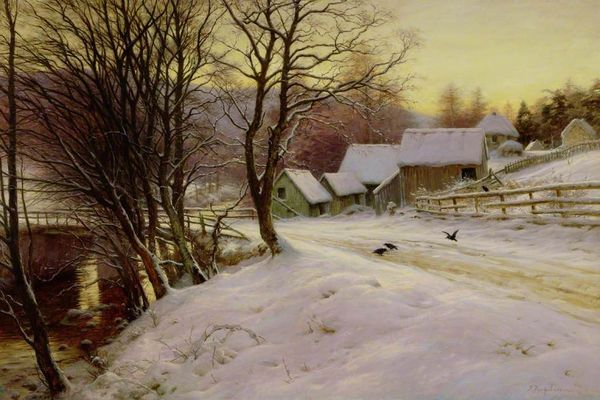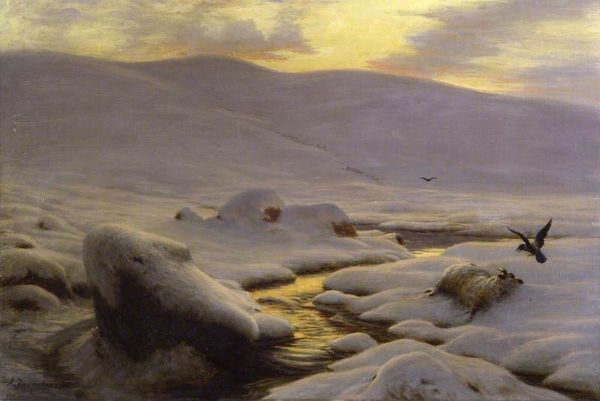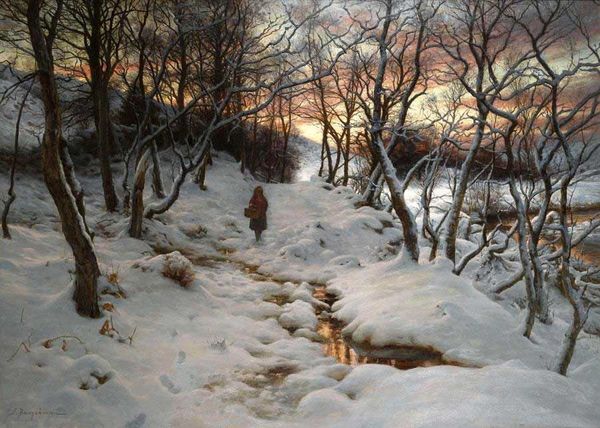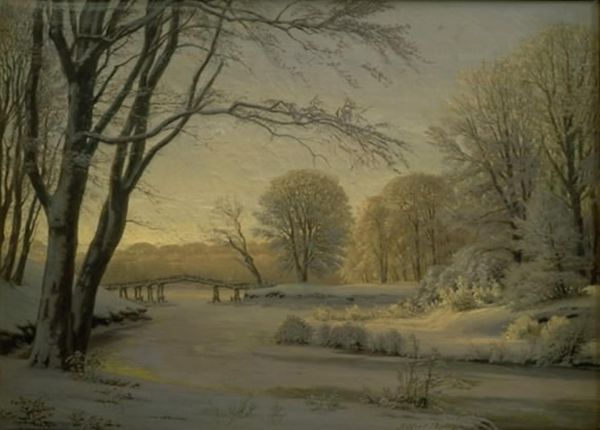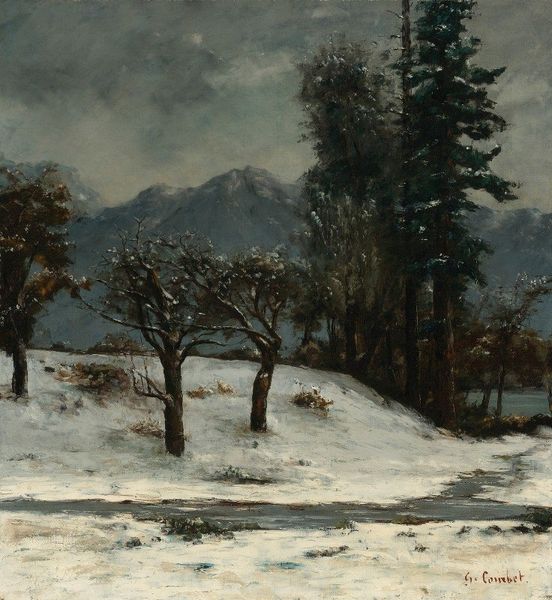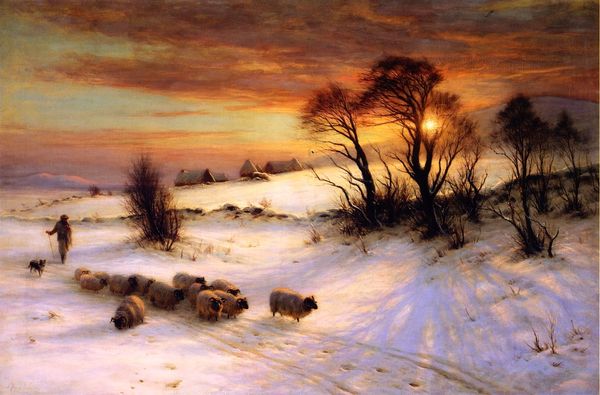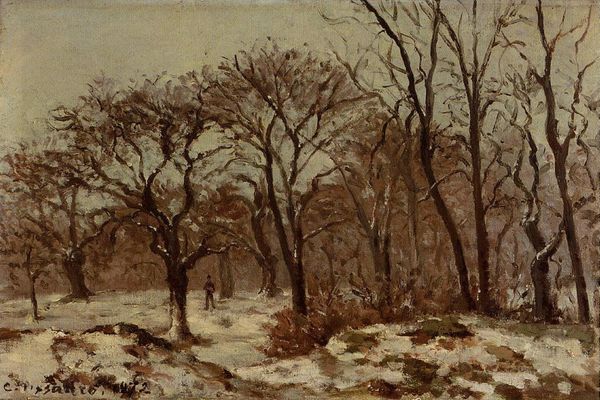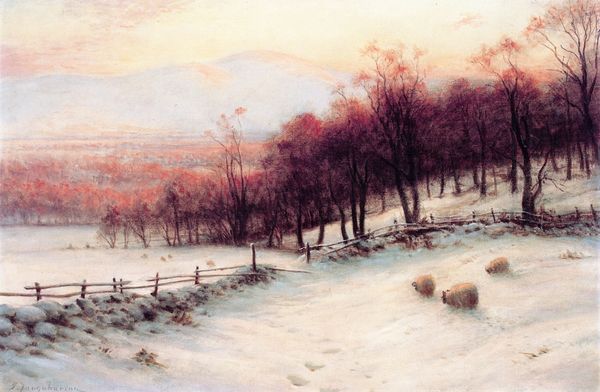
Copyright: Public domain
Curator: Looking at Joseph Farquharson's "When snow the pasture sheets," painted in 1915, what's your first reaction to this landscape? Editor: A profound stillness. It’s not just the snow-laden fields, but a sense of isolation. The long shadows suggest a sun that's present but offers little warmth. It feels like a pre-war, rural elegy. Curator: Farquharson, working primarily en plein air, was known for his depictions of Scottish landscapes, often featuring sheep, as we see here. His work was deeply connected to the Romantic tradition, but with a keen eye for realist detail. Consider the composition—it draws us in along those receding fence lines. Editor: Precisely. The fence acts as a symbolic barrier but also as a device to pull us into the canvas, confronting this desolate yet beautiful scene. What does it mean to present rural life this way, particularly on the cusp of significant social and political upheaval? It evokes questions around land, ownership, and belonging. Curator: Farquharson situated himself firmly within the establishment. His patrons were landed gentry who sentimentalized pastoral life even as industrialization shifted societal structures. His skill was presenting that vision, perhaps divorced from a more complicated reality for those who actually lived that life. Editor: Exactly. The idyllic sheen almost sanitizes the hardship of rural existence. The sheep, rendered as soft and picturesque, contribute to this idealization. Is this a form of visual propaganda, reinforcing the social hierarchy? What is occluded from this comfortable vista? Curator: That's a powerful point. While technically brilliant in capturing the light on snow, "When snow the pasture sheets" functions within a network of power relations. Art doesn't exist in a vacuum, it reflects, shapes, and legitimizes the social narratives of its time. Editor: It challenges us to confront the silences and consider whose stories are being excluded or marginalized. By critically examining landscapes like these, we gain a deeper awareness of our complicated cultural past. Thank you. Curator: A worthwhile reminder to dig beyond initial appearances.
Comments
No comments
Be the first to comment and join the conversation on the ultimate creative platform.
